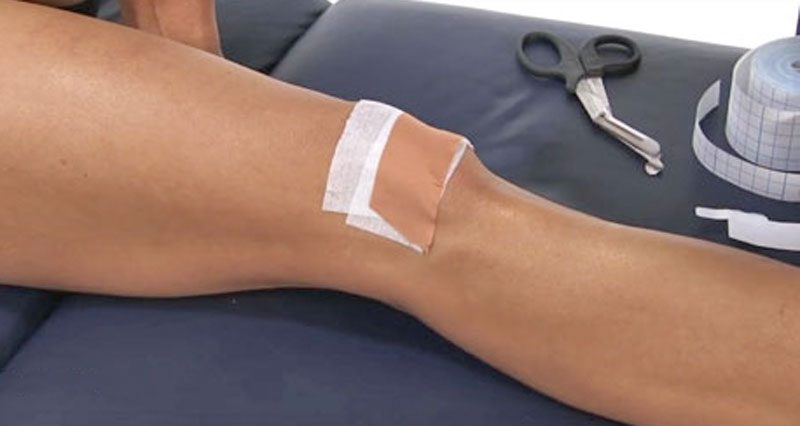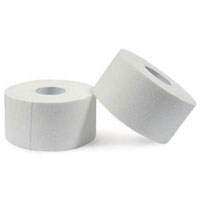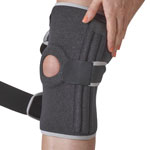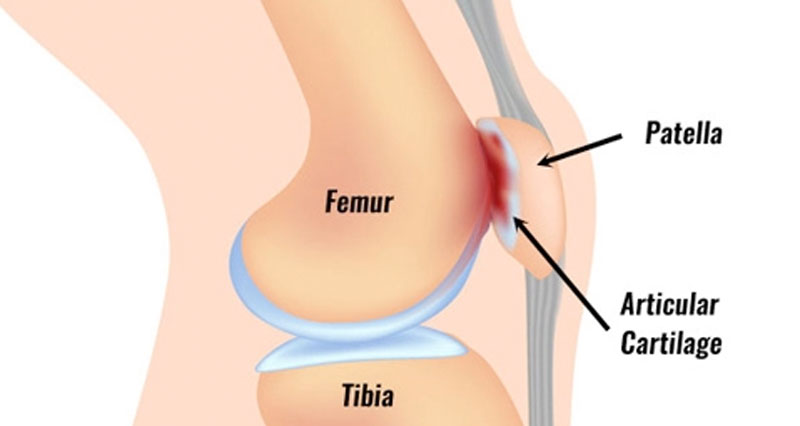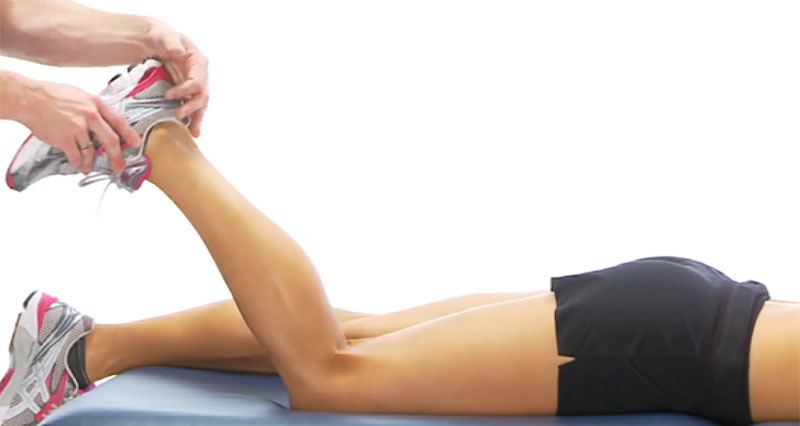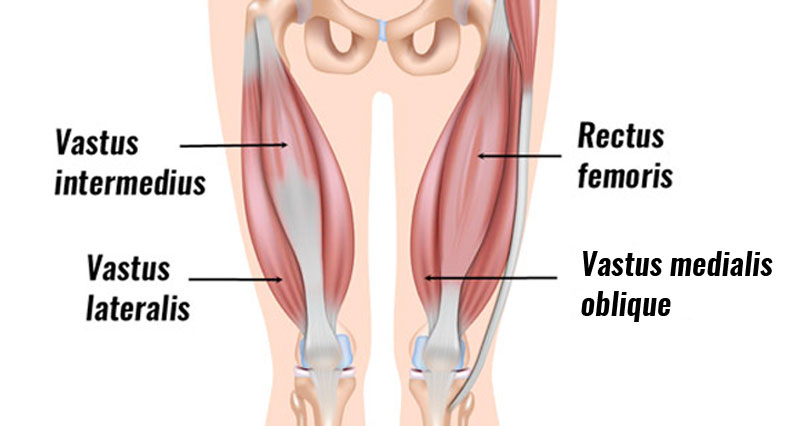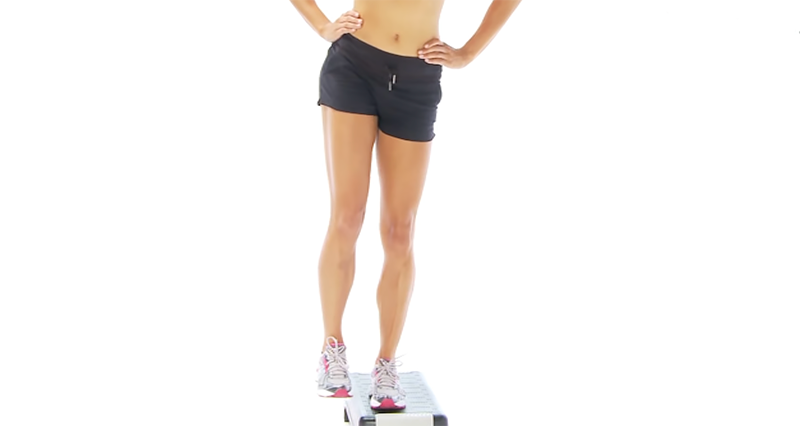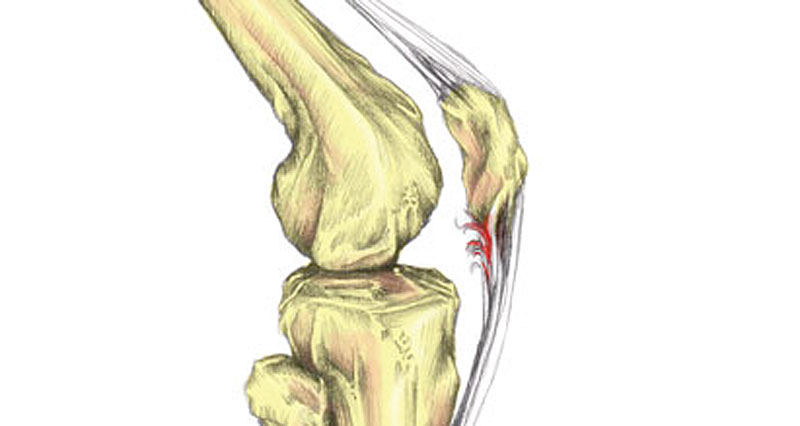Patellofemoral pain taping is excellent for relieving symptoms of Patella pain and Fat pad impingement. It works by helping to control the position of your patella (kneecap).
Medically reviewed by Dr Chaminda Goonetilleke, 13th Dec. 2021
Aim of patellofemoral pain taping
The purpose of patellofemoral taping is to reduce the symptoms of patellofemoral pain, chondromalacia patella and fat pad impingement. It also allows you to do specific muscle-strengthening exercises correctly. Therefore, encouraging normal patalla tracking.
The aim is to move or control the position of your patella. So when you bend your knee, the patella avoids rubbing over any sore spots as it glides or tracks over the femur.
How to tape for Patellofemoral pain
If patellofemoral pain taping is effective it is important to understand how to adjust your patella. Sometimes it is trial and error before you position the patella correctly.
Anchor strips
Apply ‘Hyperfix’ tape directly to the skin over the front of your knee. This acts as an anchor to apply the supporting strips.
Identify painful areas
Decide exactly how you should support the patella. This will depend on which movements cause pain.
Aim to displace your kneecap away from any pain by tilting up, down, towards the inside, or towards the outside.
Most patella pain problems require the patella to be displaced or pulled towards the inside.
Supporting strips
Apply strips of 1-inch (3.8mm) nonstretch zinc oxide tape from the outside of your patella. With a little tension, pull across and secure to the inside of your knee.
Repeat this as needed to achieve the optimum level of support. It may take a few goes of trial and error to know how best to tape your knee.
Avoid over-bending your knee
You will not be able to fully bend your knee. This is because you will likely disrupt how the tape works. If your first attempt is not successful then try a different tilt or rotation.
Tape may need re-applying after a period of time as it naturally stretches, hence the effectiveness is reduced.
You can assess the effectiveness of the taping. This is done by performing an activity which usually causes pain (e.g. a squat) before applying the tape, and then again afterwards. If the taping has been effective then the activity should be virtually pain-free.
When to tape your patella
If you have pain during normal daily activities then taping can be applied throughout the day until you have no pain.
If you have patella pain only on sports-specific activities or muscle-strengthening exercises, then use patella taping just for those activities.
Why does patellofemoral pain taping help?
Often the muscle on the inside of your thigh (vastus medialis oblique) is weak. The muscle on the outside of your thigh (vastus lateralis) is tight, or strong in comparison. As a result, this causes the patella to drift laterally (outwards) too much. Therefore, the patella does not track naturally in the correct position.
Over time, friction between your patella and femur (thigh bone) causes inflammation and pain.
Taping the kneecap so it is pulled medially (towards the inside) helps it track away from any sore spots as your knee bends.
General anterior knee pain taping
This is an additional knee-taping technique which can be used to treat anterior knee pain. It works by encouraging the muscles of the thigh to pull in a way that helps patella tracking.
It is ideal for running and other sporting activies where a full patella taping may be restrictive.
This taping works by encouraging your leg muscles to keep your knee facing forwards. As a result, it encourages correct patella tracking.
References & further reading
- Google Scholar – Patellofemoral pain syndrome taping
